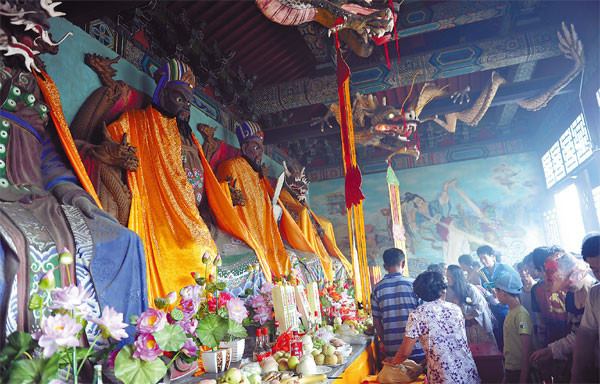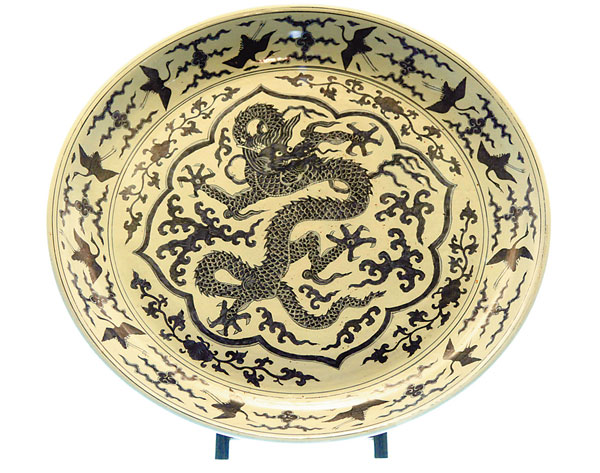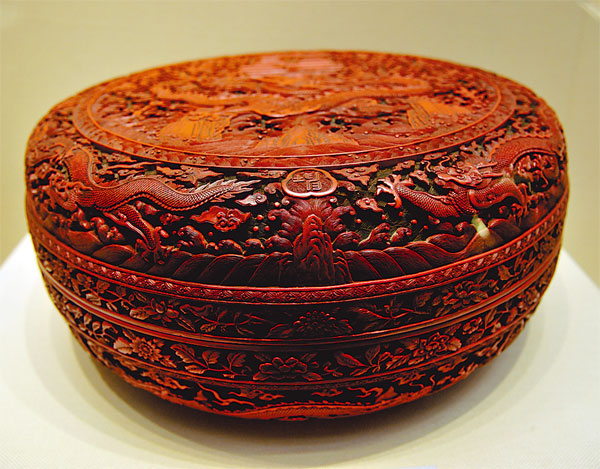Demystifying China's ancient dragons





They can be fickle, lucky or divine - sometimes all of the above - but more importantly they are revered throughout the country
The mythical brilliance of the dragon continues to ignite the popular imagination, even in modern times: Last summer, a story about a man who claimed to have found a dragon in his backyard went viral. In contrast to the malevolent dragons of the West, Chinese dragons are auspicious, often seen as neutral guardians or even benevolent protectors. That is not to say that Chinese dragons are not dangerous - their powers frequently include magic and a whole host of special powers. To celebrate the dragon's role in Chinese mythology, the World of Chinese has compiled this bestiary of ancient Chinese dragons.
Dragon Kings 龙王 (long wang)
The four Dragon Kings are the divine rulers of the oceans, who control weather and bring rainfall. As befits kings, each has a royal court and commands an army of ocean creatures. The Dragon Kings appear many times in classical literature, most famously in the epic Journey to the West. Their magical powers extend far beyond controlling the weather, as they can appear in dragon form, human form, or as massive spouts of water. Even today, shrines throughout China honor the Dragon Kings and travelers seek their favor on new journeys. It is best to stay on the Dragon Kings' good side though, as many stories discuss their willingness to cause droughts, storms and floods.
Azure dragon 青龙 (qing long)
The Azure Dragon of the East is one of the most famous dragons in China. One of the Four Constellations (, s xing, four symbols) it can be seen in the night sky alongside the Vermilion Bird of the South, the White Tiger of the West and the Black Turtle of the North. The Azure Dragon has a reputation for providing protection and in Chinese literature, it has been reincarnated as several famous war heroes. The Azure Dragon is associated with spring and the element of wood. The day that the Azure Dragon "raises its heads" (when the constellation becomes visible) has gained popularity as an auspicious day to get a haircut.
Yellow dragon 黄龙 (huang long)
The Yellow Dragon is the dragon that symbolizes the emperor as well as the center of the four directions. Sometimes said to be a reincarnation of the Yellow Emperor, the Yellow Dragon is said to have burst from a river to present the elements of writing to Emperor Fu Xi, the first mythical emperor of China. The Yellow Dragon's fondness for emperors (having been one in a previous life) has transformed it into a symbol for the imperial family, and the famous hornless dragon appears as a motif in Forbidden City architecture. The royal association with yellow became so strong that for a time, only the emperor and his family were allowed to wear the color. When people think of auspicious dragons, including the dragon of the Chinese zodiac, this is the dragon that comes to mind.
Treasure dragon 伏藏龙(fu zang long)
Fuzanglong are the dragons of hidden treasure. They live deep underground, guarding their massive hordes, said to include natural treasures such as gemstones and gold nuggets, as well as man-made wonders such as great works of art. Fuzanglong are almost always depicted clutching their magic pearl, their most precious possession. Humans rarely see these elusive dragons, usually only when they are deep underground hunting for forbidden treasure. On rare occasions, they will be roused from their slumber and burst out of the ground, causing volcanoes to form. When a volcano erupts unexpectedly, it is said that a fuzanglong is reporting back to heaven.
Flying dragon 飞龙(fei long)
While many Chinese dragons can fly, feilong are said to actually have wings and spend their time soaring through the clouds. A historic description claims that feilong are said to have the head of a dragon, the tail of a phoenix and multicolored scales. These flying dragons are an ancient species, earning an entry in the first Chinese dictionary (Explaining and Analyzing Characters) A sighting of feilong was often used to signify a great or accomplished person, and very spiritual people were often deemed worthy enough to ride on their backs. An association with Daoism has persisted throughout history, as the immortal feilong had achieved the fabled Daoist objective, immortality. In modern times, feilong have lent their name to a genus of pterosaurs, flying reptiles from the late Triassic to the end of the Cretaceous Period.
Courtesy of the World of Chinese
www.theworldofchinese.com

| Fishers worship the four Dragon Kings at a shrine in Rizhao, Shandong province. Photos Provided to China Daily |
| Blue and white porcelain plate with a dragon. Photos Provided to China Daily |
|
A yellow dragon on the nine-dragon screen at Beihai Park in BeijingPhotos. Provided to China Daily |
| A lunchbox from the Qing Dynasty (1644-1911) with flying dragons. Photos Provided to China Daily |
(China Daily European Weekly 11/14/2014 page27)
Today's Top News
- Beijing protests new US arms sale to Taiwan
- Economic growth in 'upward momentum'
- Strong ties with Thailand stressed
- Japan warned on Taiwan interference
- Takaichi's dangerous rhetoric revives Japan's militaristic past
- China expresses worry over Japan's military and security moves






























